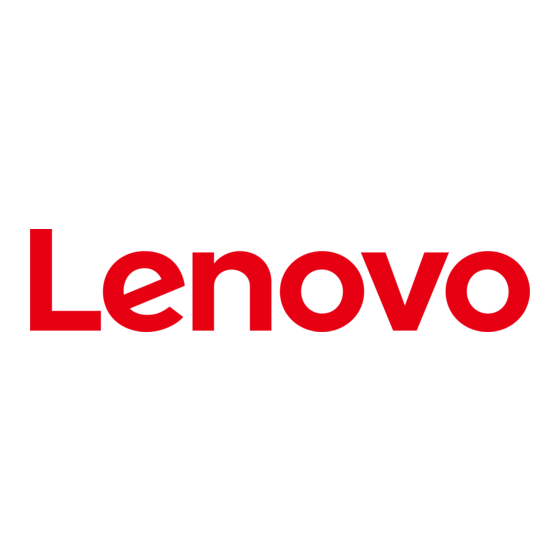Lenovo 7143 Manuale del prodotto - Pagina 2
Sfoglia online o scarica il pdf Manuale del prodotto per Server Lenovo 7143. Lenovo 7143 43.

Key features
The x3850 X5 is a mission-critical 4U four-socket server, capable of expanding to up to 8 processor
sockets and 6 TB of memory in 10U of rack space. It offering outstanding performance, and superior
reliability and fault-tolerant memory characteristics.
Lenovo eX5 technology represents the fifth generation of enterprise servers based on the same design
principle that began with in 1997: to offer systems that are expandable, offer "big iron" reliability,
availability, and serviceability (RAS) features, with extremely competitive price/performance on an Intel
Xeon processor-based system.
Scalability and performance
The x3850 X5 offers numerous features to boost performance, improve scalability, and reduce costs:
The x3850 X5 supports up to four high-performance Intel Xeon E7 family allowing you to upgrade as
business needs require.
Scalable to eight processors by connecting two x3850 X5 servers together to form a single system
image.
Each x3850 X5 scalable to 2 TB of memory internally or 3 TB of memory with the addition of the
MAX5 V2 memory expansion unit. With two x3850 X5 servers each with MAX5 units, the total
available system memory is up to 6 TB.
Supports the Intel Xeon E7-2800, E7-4800 and E7-8800 families of high performance processors,
up to 10 cores each, offering superior system performance
Intel Turbo Boost Technology dynamically turns off unused processor cores and increases the clock
speed of the cores in use, by up to three model frequencies. For example, with 7-10 cores active, a
2.4 GHz E7-2870 10-core processor can run the cores at up to 2.53 GHz. With 5-6 cores active, it
can run those cores at 2.67 GHz; with only 1-4 cores active, it can run those cores at 2.8 GHz
Each processor includes two integrated memory controllers, to reduce memory bottlenecks and
improve performance. Memory access is at up to 1066 MHz frequency, depending on the processor
model and memory used.
The MAX5 V2 adds an additional four memory controllers for a total of eight memory controllers to
maximize memory parallelism and performance.
In processors implementing Hyper-Threading technology, each core has two threads capable of
running an independent process. Thus, an 8-core processor can run 16 threads concurrently.
Intel's Virtualization Technology (VT) integrates hardware-level virtualization hooks that allow
operating system vendors to better utilize the hardware for virtualization workloads.
Intel QuickPath Interconnect (QPI) technology for processor-to-processor connectivity and Intel
Scalable Memory Interconnect (SMI) processor-to-memory connectivity:
Intel QPI link topology at up to 6.4 Gbps with four QPI links per CPU
Intel SMI link topology at up to 6.4 Gbps with four SMI links per CPU
Up to 64 DIMM sockets in the server (eight per memory card), plus an additional 32 DIMMs with an
optional 1U MAX5 V2 memory expansion unit, for a total of 96 DIMM sockets. With two x3850 X5
servers each with MAX5 units, the total number of DIMM sockets is 192.
The use of solid-state drives (SSDs) instead of, or along with, traditional spinning drives (HDDs) can
significantly improve I/O performance. An SSD can support up to 100 times more I/O operations per
second (IOPS) than a typical HDD.
Up to 24 1.8-inch SSD bays, or up to 16 2.5-inch bays together with the option of an optical drive,
provide a flexible and scalable all-in-one platform to meet your increasing demands.
Seven PCIe 2.0 slots for maximum I/O expandability
System x3850 X5 (7143)
2
